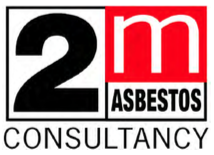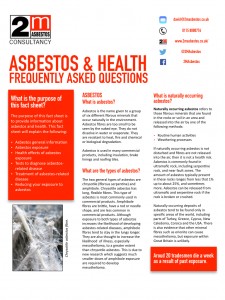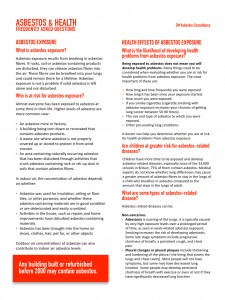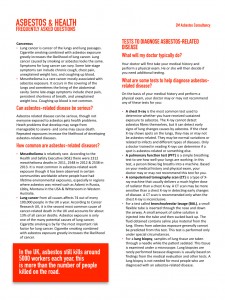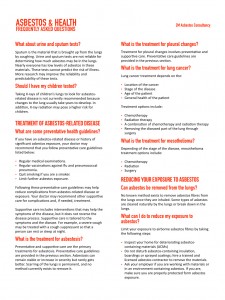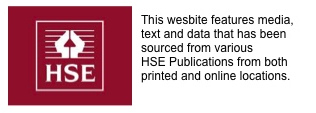New Zealand has a new guide for managing and removing asbestos in the workplace.
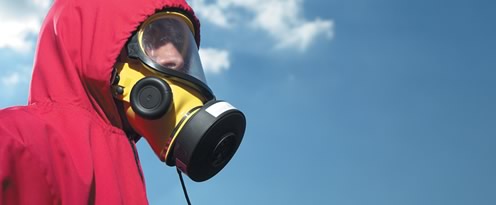
Described as the first for the country, the new guide hopes to cut asbestos-related deaths in half by 2024.
The “Approved Code of Practice for the Management and Removal of Asbestos,” or ACOP, was designed to complement the Health and Safety at Work (Asbestos) Regulations 2016.
Described as the first for the country, the new guide hopes to cut asbestos-related deaths in half by 2024. The new code took effect Nov. 3.
Approximately 170 people in New Zealand die each year from asbestos-related diseases. Asbestos is the single greatest cause of death from work-related diseases, according to WorkSafe New Zealand, the government agency that released the guide.
“[ACOP] is meant to be a comprehensive resource for PCBUs [persons conducting a business or undertaking] that have, or are likely to have, asbestos in their workplace, as well as PCBUs who remove asbestos or conduct asbestos-related work,” Julia Paterson-Fourie, a senior communications advisor for WorkSafe, told Asbestos.com.
On Oct. 1, it became illegal to import asbestos-containing products into New Zealand, which joined 57 other countries that already banned the toxic mineral.
Deaths related to asbestos exposure are expected to continue for decades in the Southwest Pacific country because of the long latency period associated with asbestos-related diseases such as mesothelioma.
“New Zealand’s efforts to reduce asbestos-related deaths by 50 percent by 2040 will primarily be achieved through a substantial reduction in workplace exposures to respirable asbestos fibers,” Paterson-Fourie said.
Asbestos Guide Complements Occupational Health Guidelines
Despite the latest ban, asbestos-containing materials (ACMs) are still prevalent in New Zealand’s infrastructure. Buildings built, altered or refurbished from 1940 until the mid-1980s likely contain asbestos, according to WorkSafe.
Currently, most asbestos use in the country involves specialty products such as gaskets, seals and brake linings.
WorkSafe consulted with trade unions, employer organizations and experts within the asbestos industry to develop the code.
The collaboration allowed for more comprehensive guidelines compared to previous guidance, which focused only on asbestos removal. It also is written for a broad range of readership and designed for the web for improved mobile access.
“Overall, feedback on the consultation draft was very positive,” Paterson-Fourie said. “WorkSafe used the public consultation exercise to help shape material on issues where there wasn’t clear direction.”
Asbestos Standards in New Zealand
Generally, working with asbestos in New Zealand is prohibited, including the manufacture, supply, storage, install, sale or transport of products containing asbestos.
The guide sets the airborne contamination standard, or the average concentration over any eight-hour period, at 0.1 fibers per milliliter of air. This level cannot be exceeded at any workplace, unless it is inside an asbestos removal enclosure using negative pressure.
Anyone who is at risk of airborne asbestos exposure above the trace level is required to wear suitable personal protective equipment.
Specified types of work permitted under the new regulations include:
- Sampling, removal and disposing procedures
- Maintenance, service and rectifying work
- Research and analysis, including preparing asbestos artifacts for display
- Firefighting and other emergency work
- Mining operations that may disturb asbestos while extracting other minerals
- Working with asbestos-contaminated soil only if possible airborne contamination doesn’t exceed trace level
The guide details five steps for managing asbestos exposure. The initial and most important step is identifying asbestos and ACMs and determining whether they are friable (able to be crumbled, pulverized or reduced to a powder by hand pressure when it is dry). Non-friable materials are considered safer but can still pose problems if disturbed.
Paterson-Fourie said the context of the hazards is the most progressive part of the guide.
“As part of WorkSafe’s goal to make our guidance reachable and readable to the audience, the drafters created a section that puts asbestos into a world and New Zealand perspective, including some case studies that help put a human face to the harmful effects of asbestos,” she said.
- Page 1
- Page 2
- Page 3
- Page 4
New Zealand’s History with Asbestos
Asbestos awareness in New Zealand began in the late 1930s, when the “Report of the Interdepartmental Committee on Silicosis” linked the fibrous mineral with deadly lung conditions, including asbestosis.
But heavy importation and use of the mineral in manufacturing would continue for decades.
Asbestos exposure is most common in the industrial sector. New Zealand dock workers who unloaded the mineral from ships beginning in the late 1930s were at high risk. Other high-risk occupations included workers in the railway, construction and asbestos cement industries.
Products comprised of asbestos mixed with cement were manufactured in New Zealand until the mid-1980s.
Asbestos regulations in New Zealand did not come until 1978. It became illegal to import blue and brown asbestos in its raw form in 1984, but asbestos-containing products continued to be used until supplies ran out.
Everything from insulating board to fuse boxes contained the carcinogenic mineral.
Robin McKenzie, an electrical engineer with the New Zealand Electricity Department (NZED), was the first person to take legal action against the New Zealand government in relation to asbestos exposure.
McKenzie, diagnosed with mesothelioma cancer in 1990, sued the government for $2 million, settling out of court.
The media and public attention from the case led to the establishment of a national database to track asbestos-induced health problems in people who worked in asbestos environments.
Global Stand on Asbestos Bans & Restrictions
Today, the Accident Compensation Act 2001 provides compensation for mesothelioma and lung cancer caused by asbestos, but workers can no longer file individual claims for asbestos-related diseases.
This differs from the U.S. where there are multiple ways to file an asbestos claim, including lawsuits, asbestos trust funds and VA claims.
However, while regulated, asbestos is still legal in the U.S., including the import of asbestos-containing products and materials.
New Zealand’s recent ban puts the U.S. further in the minority of industrialized nations that haven’t fully banned the toxic mineral in all of its forms.
Colombia, Malaysia and the Philippines are moving toward more asbestos restrictions, while South Korea achieved a total ban in 2015.
Even Canada, once one of the world’s largest asbestos producers, recently committed to a national ban of the mineral.
The U.S. has reduced its use of asbestos significantly in recent decades, but the country still imported 423 tons of the asbestos products in 2014, according to the United States Geological Survey.
An estimated 10,000 people in the U.S. continue to pass away each year from asbestos-related illnesses.
Source: Asbestos.com
